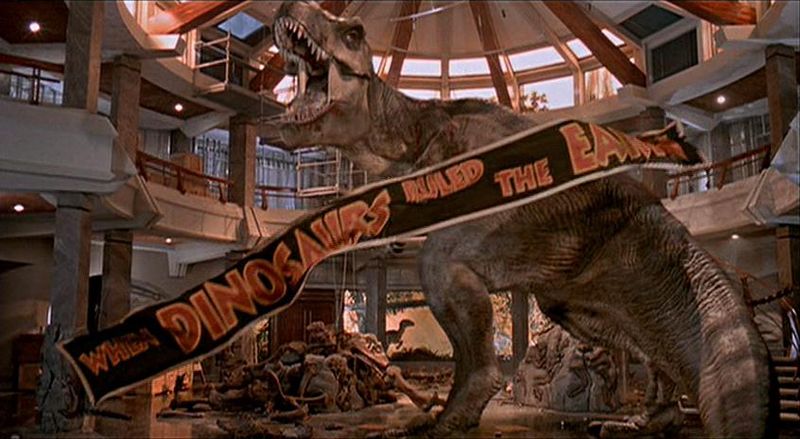One of the challenges that the film struggles to overcome is the dissonance between beauty and emotional connection. Beauty is deeply emotional, for sure, but when it surrounds a story, it doesn't necessarily inspire the story's emotions.
An example, pointed out by my wife as we walked to our car from the theater, is the scene in which Pi's freighter, which carries his entire family and most of the menagerie from their zoo, sinks in to the Pacific. The scene resolves with Pi, under water, watching the lights of the ship fade in to the blackness.

The image is haunting, beautiful... but ultimately, it inspires awe, rather than sadness.
I've seen very few films that have successfully utilized profoundly beautiful images in conjunction with pivotal emotional moments. Often, we see beautiful landscapes (in anything from The Searchers to Lord of the Rings ), but these set the scene. We see the beautiful landscape, then we move in to the characters and their moment within it.
Even in Independence Day, when the aliens blow up major cities, the effect is one of awe, rather than sadness or grief. For that film, it works, since we're expected to keep our moods light for what turns out to be a very fun, exciting adventure.
Spielberg is the only filmmaker who consistently utilizes beauty and the awe it inspires in conjunction with an emotional payoff. I'm thinking specifically of the astounding climax to Close Encounters of the Third Kind, which is very similar in some ways to the climax of E.T. the Extra-Terrestrial. Elsewhere, awe IS the appropriate reaction (the final T-Rex shot in Jurassic Park comes to mind, when our heroes have already escaped, and we are given a chance to admire the monster without fear).

But isn't beauty something of Ang Lee's signature? I remember the first time I really took note of the director was with his beautiful film, Crouching Tiger, Hidden Dragon. That film is book-ended by two major fight sequences, both incredibly beautiful. One of them, across rooftops in a dark town, demonstrates Lee's strength. The beauty of the sequence serves to underline its magic, and becomes part of the awe of the moment, and of the story. Also, it is beautiful in the way dance is beautiful., so it lends itself to a certain narrative clarity.
The second, atop tall bamboo trees, is graceful, dance-like, and ultimately slows the story down. Beauty, here, becomes a hindrance.
That's not to say the scene isn't legendary. It's one of the most fascinating fight scenes in cinema, but in the context of its story, the attention to beauty overwhelms attention to pace.
In neither case are these scenes particularly emotional. That, I think, remains the most difficult effect to merge with beauty in film.
-AzS
2 comments:
Indeed I'm surprised by those who said Life of Pi could not be adapted. For the beginning it struck me as a very cinematic concept.
Tuckerscreator, I think the concern was that the book de-emphasizes narrative in favor of philosophical speculation, something small-scale and art-house films can do very well, but that bigger-budget spectacle films tend not to handle. The theory is, if you're spending so much money on something, you want it to be as accessible and comprehensible as possible -- you need every audience member you can get to recoup that kind of budget. "Pi" might have been considered unfilmable because it required both the art-house introspection and the big budget.
Post a Comment